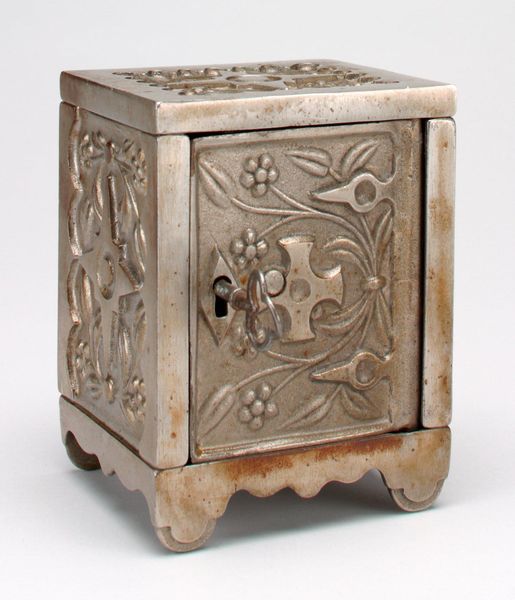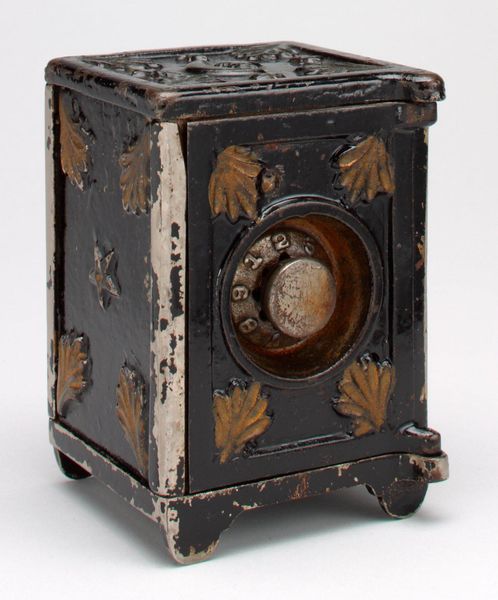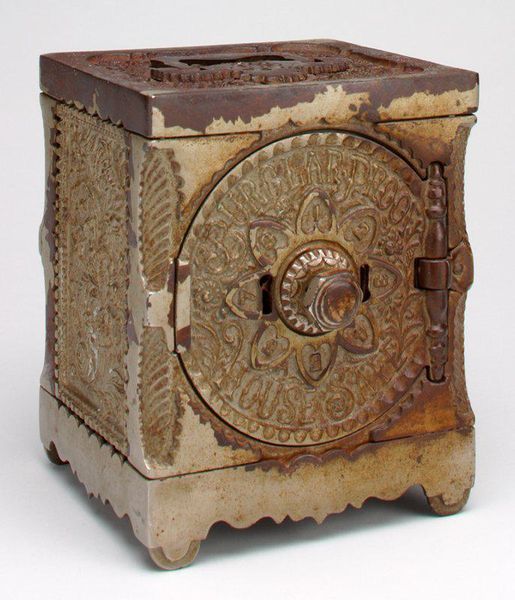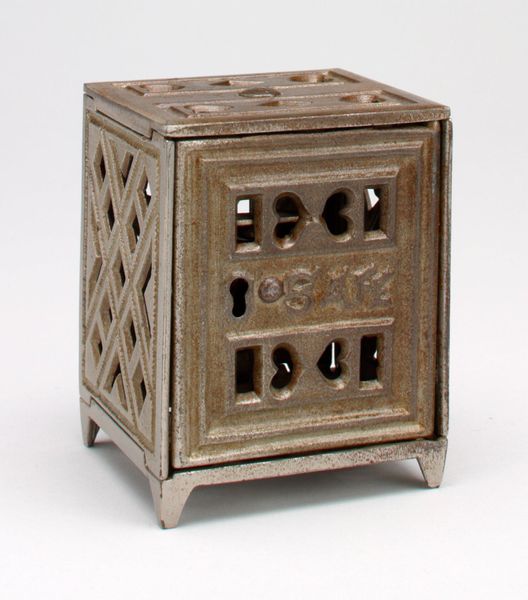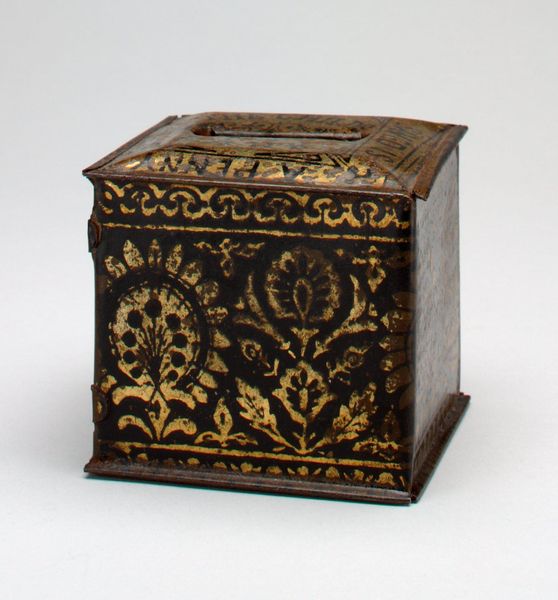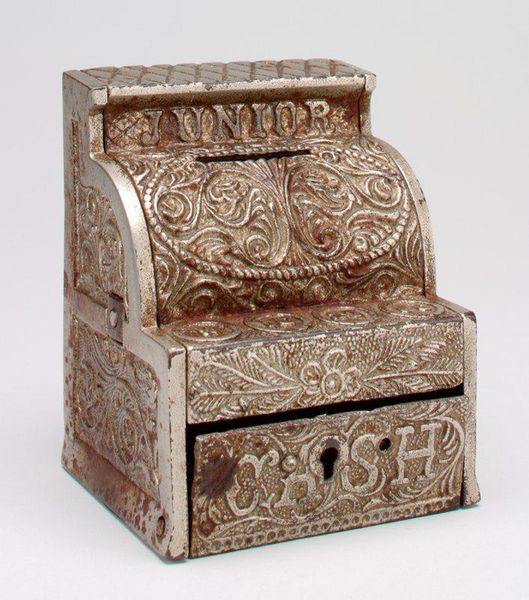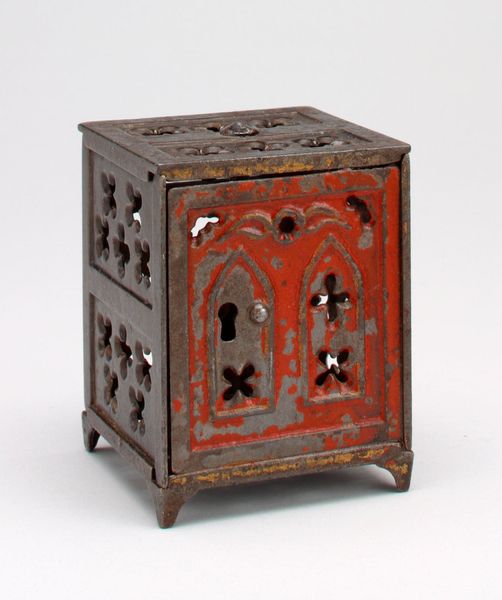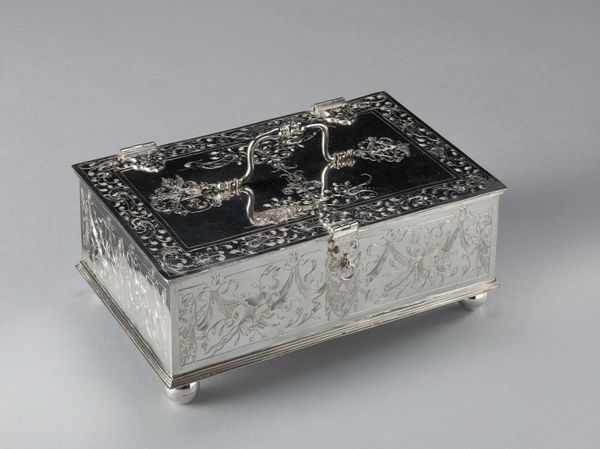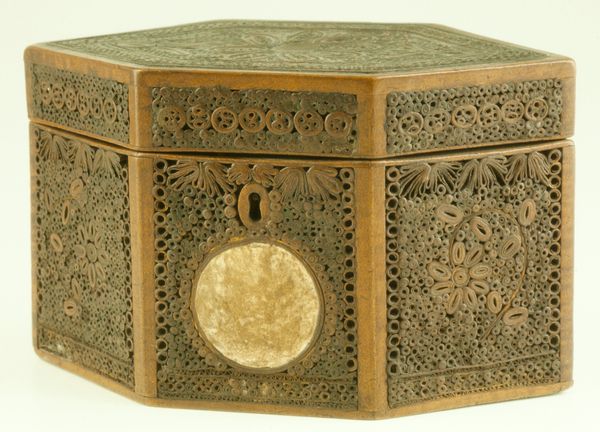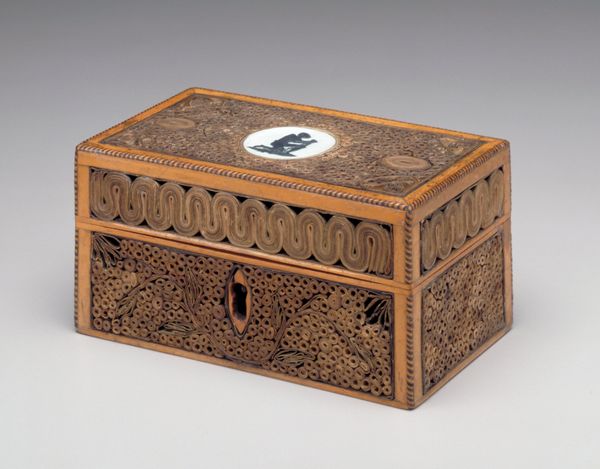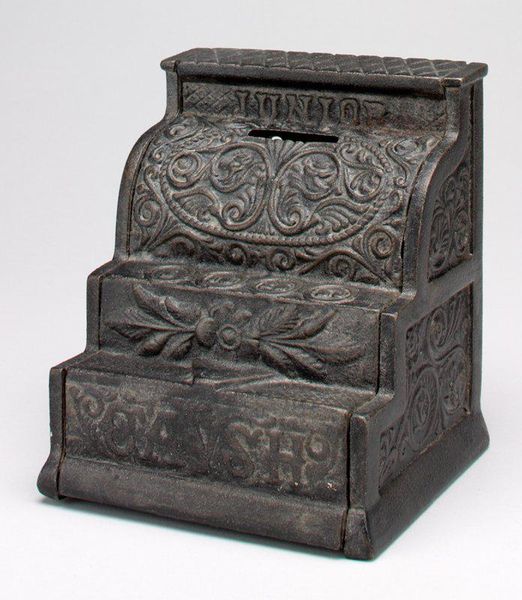
mixed-media, metal, sculpture
#
mixed-media
#
art-nouveau
#
metal
#
sculpture
#
sculptural image
#
sculpture
#
ceramic
#
decorative-art
Dimensions: 4 1/4 x 3 5/16 x 3 1/4 in. (10.8 x 8.41 x 8.26 cm)
Copyright: Public Domain
Curator: Editor: So, this is a “Saving Bank” still bank, dating from around 1904, made by the Kenton Hardware Manufacturing Company. It's a small, metal cube with Art Nouveau detailing. It's surprisingly ornate for a bank! What do you see in this piece, beyond its apparent function? Curator: I see a powerful symbol of early 20th-century cultural values and the social construction of finance. Consider how this object instills the concept of saving, particularly targeting children. What societal forces were at play then, shaping the need for such a didactic object? Editor: I guess it's teaching children about delayed gratification, and maybe reflecting a growing middle class with some disposable income. I hadn’t thought of it that way... almost like a mini propaganda piece? Curator: Exactly! And think about the imagery: the miniature safe, the decorative griffin… Are these symbols of protection and power being deployed to normalize banking institutions? How does the *act* of saving money reinforce larger structures of power? What implicit narratives does this seemingly innocuous object promote? Editor: That's a really interesting point. The griffin does give it this sense of authority. So it's not just about teaching kids to save, but also teaching them to trust these larger institutions. Curator: Precisely! It reflects a system of control, teaching future consumers about capitalism. Who had access to saving, and whose labor were they saving from? Thinking about access also opens up the concept of who benefits and who is further disenfranchised in our economy. Editor: Wow, I'll never look at a piggy bank the same way again. Thanks for helping me look at the historical context. It really does say a lot. Curator: My pleasure. It is through questioning the ordinary that we unearth the extraordinary in the history of art and social evolution.
Comments
No comments
Be the first to comment and join the conversation on the ultimate creative platform.
